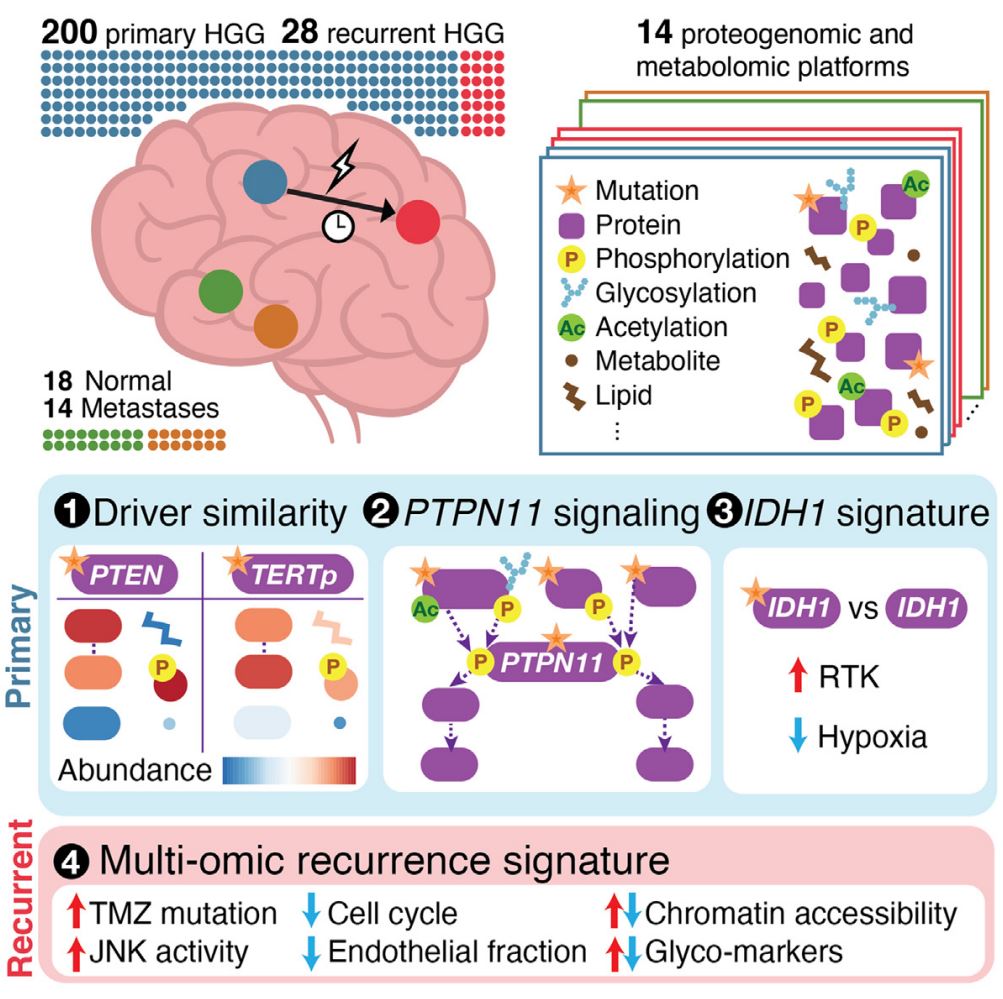Jurisdiction:
United States
Organ System:
Brain
Funding Organizations:
- National Cancer Institute, USA
- National Institutes of Health, USA
- Spanish Science Ministry
Research Organizations:
- Washington University in St. Louis, USA
- Universidad Autonoma de Barcelona, Spain
- Pacific Northwest National Laboratory, USA
- Oregon Health & Science University, USA
- Johns Hopkins University, USA
- Children's Hospital of Philadelphia, USA
- Icahn School of Medicine at Mount Sinai, USA
- Broad Institute of MIT and Harvard, USA
- National Cancer Institute, USA
Principal Investigators
:- Li Ding
- Tao Liu
- Karin D. Rodland
- Milan G Chheda
- Adam C Resnick
Publication:
External Links:
Although genomic anomalies in glioblastoma (GBM) have been well studied for over a decade, its 5-year survival rate remains lower than 5%. We seek to expand the molecular landscape of high-grade glioma, composed of IDH-wildtype GBM and IDH-mutant grade 4 astrocytoma, by integrating proteomic, metabolomic, lipidomic, and post-translational modifications (PTMs) with genomic and transcriptomic measurements to uncover multi-scale regulatory interactions governing tumor development and evolution. Applying 14 proteogenomic and metabolomic platforms to 228 tumors (212 GBM and 16 grade 4 IDH-mutant astrocytoma), including 28 at recurrence, plus 18 normal brain samples and 14 brain metastases as comparators, reveals heterogeneous upstream alterations converging on common downstream events at the proteomic and metabolomic levels and changes in protein-protein interactions and glycosylation site occupancy at recurrence. Recurrent genetic alterations and phosphorylation events on PTPN11 map to important regulatory domains in three dimensions, suggesting a central role for PTPN11 signaling across high-grade gliomas.

